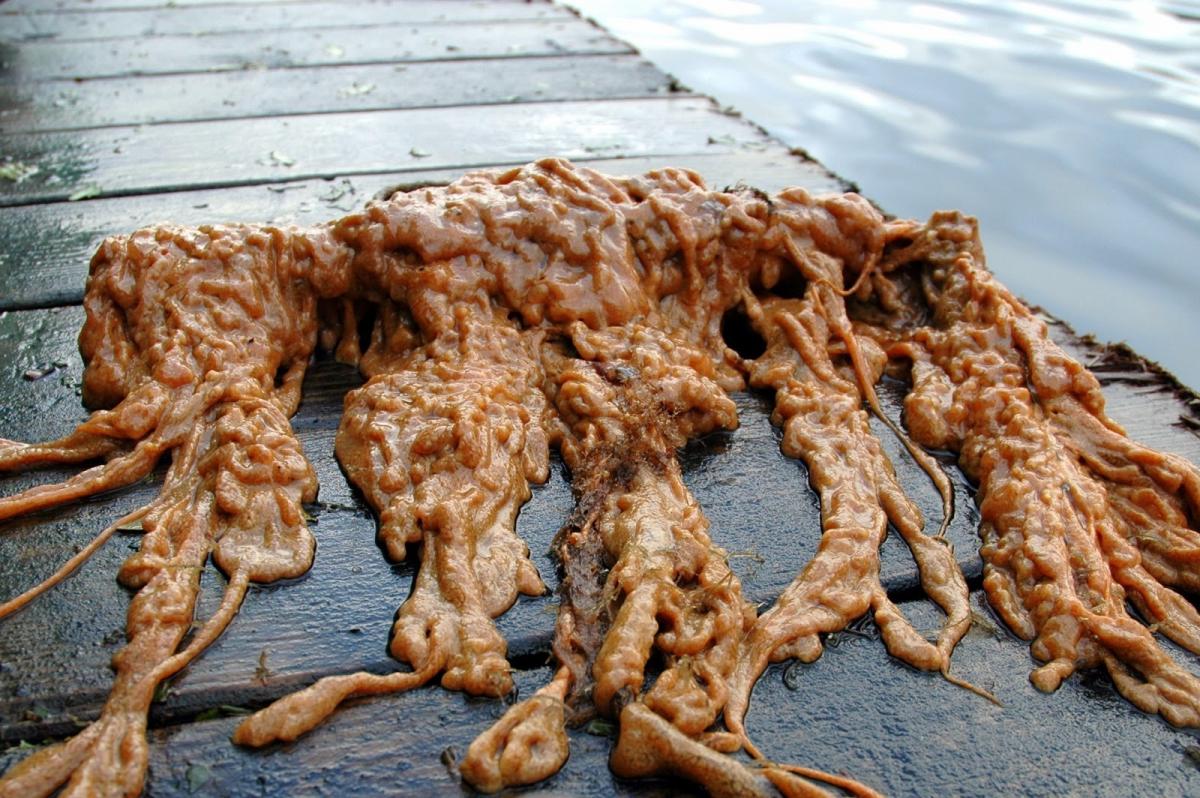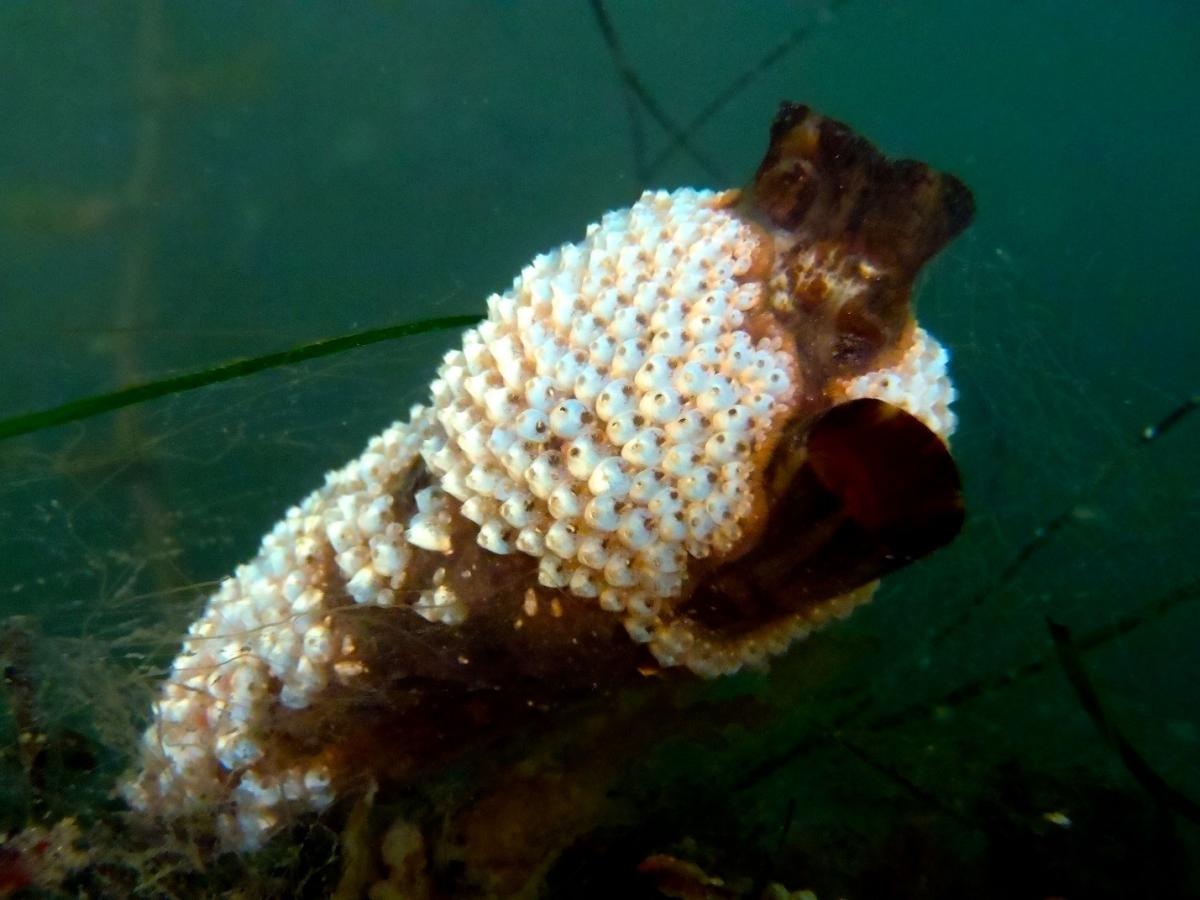Fouling Community Field Guides
Bryozoa
Bryozoans are colonial animals, meaning that many single zooids are stitched together to make one larger colony, akin to how corals grow. The zooids are soft bodied organisms with tentacles that live inside a cell that is part of the colony’s exoskeleton. The way these cells are arranged depends on the morphotype of the species.
Morphotypes
- Branching Bryozoans arrange their cells vertically so that large colonies look like a branched tree.
- Encrusting Bryozoans arrange their cells horizontally or lateral, so that colonies look like a large sheet or mostly flat carpet.
Reproduction
Bryozoans can broadcast spawn, brood larvae internally, persist through budding, and even form statoblasts, or survival pods, which protect larvae in unpredictable conditions until ready for maturation. All colonies start with one original zooid, around which all other zooids arrange themselves.
Feeding
Bryozoans are filter feeders and their tentacles sweep particles from the water inside their rooms for digestion.
Species Examples and Impacts
Amathia verticillata is often known as the spaghetti bryozoan, as unlike most other branching bryozoans, its exoskeleton is soft.
Bugula neritina is one of the most cosmopolitan invasive species, meaning one of the most widespread. It is very common in fouling communities on the pacific coast.
Watersipora subtorquata is a type of encrusting bryozoan which forms coral-like standing plates. Its distinct pattern earned it the name of strawberry bryozoan.
Interesting Facts
Some species, like Conopeum chesapeakensis, can form both encrusting and branching shapes and little is known about what spurs a colony to either morphotype.
Photo of Examples
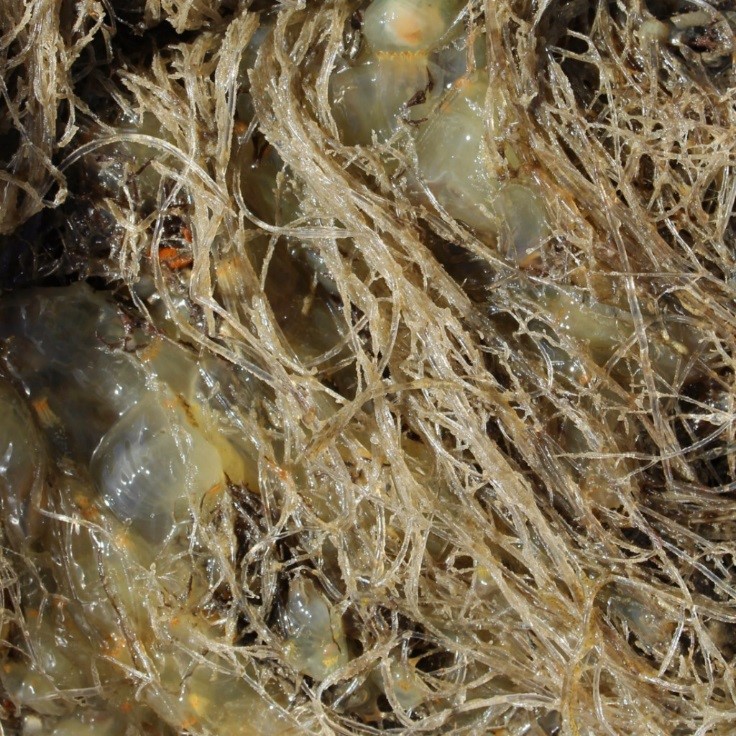
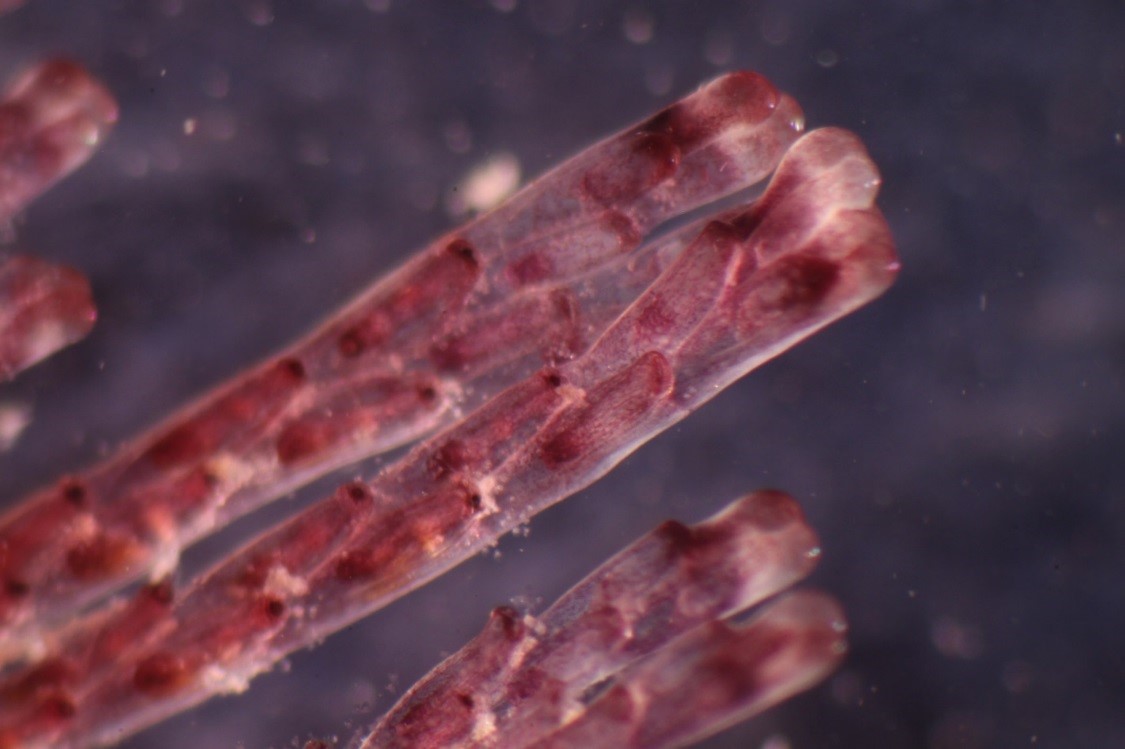
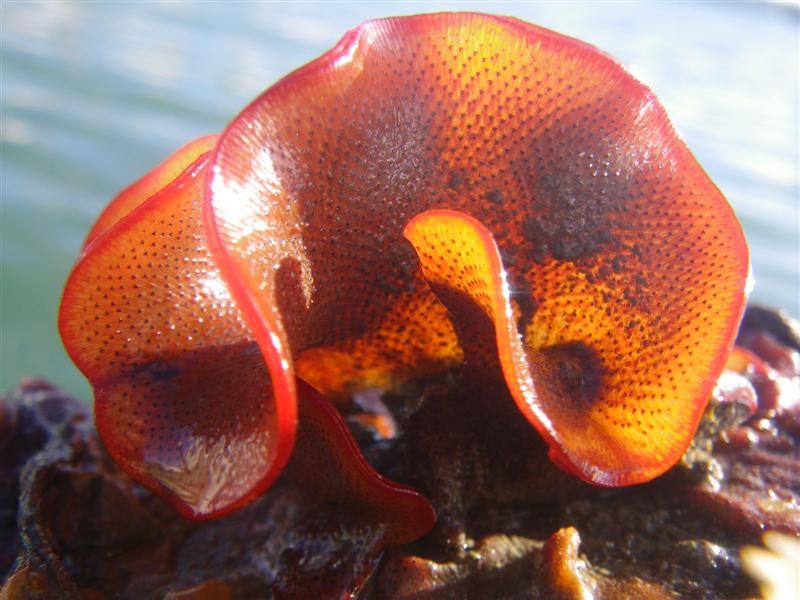
![]()
Tunicata
Tunicates, or sea squirts, are marine invertebrates that are soft and slimy to the touch. They are most closely related animals to us in the bunch, being a distant part of the Chordata family. Tunicates still have “notochords” and are sometimes called Urochordata.
Morphotypes
- Solitary Tunicates look like standing oblong grapes with siphon ears. Can be large and opaque.
- Colonial Tunicates are many “solitary” tunicates that live attached to each other and share siphons. They often share siphons with 5-8 other zooids and these groups are stitched to other sharers like a quilt. This can create patterns and colorful mats.
Reproduction
Tunicates practice most forms of reproduction common to marine invertebrates. Some species broadcast spawn where free-swimming larvae eventually settle on new rocks or docks.
Tunicates can also brood larvae and these juveniles are then released to find their own new spot to settle.
Some colonial tunicates can reproduce asexually by budding.
Feeding
Most tunicates are suspension feeders or filter feeders. This is why most solitary tunicates look like they have 2 ear-like tubes or colonial tunicates are arranged around large holes; these are the siphons through which the tunicates pull in and push out water through their digestive system.
Species Examples and Impacts
Didemnum vexillum is a colonial tunicate that is known to overgrow total communities in its invasive range and smother native species. It reproduces asexually and is difficult to remove once established.
Styela clava is a large solitary tunicate that is an invasive nuisance species, as it often settles on fishing gear and increases the weight of things like lobster pots and long-lines, causing a nuisance to aquaculture facilities and fisherman.
Interesting Facts
These are easy to spot on plates as they are colorful, large, and can secrete chemicals that prevent other invertebrates from growing on top of them.
Asexual budding makes some tunicates especially successful invasive species, as eradication can only be successful if you remove every single zooid of a colony.
Photo of Examples
